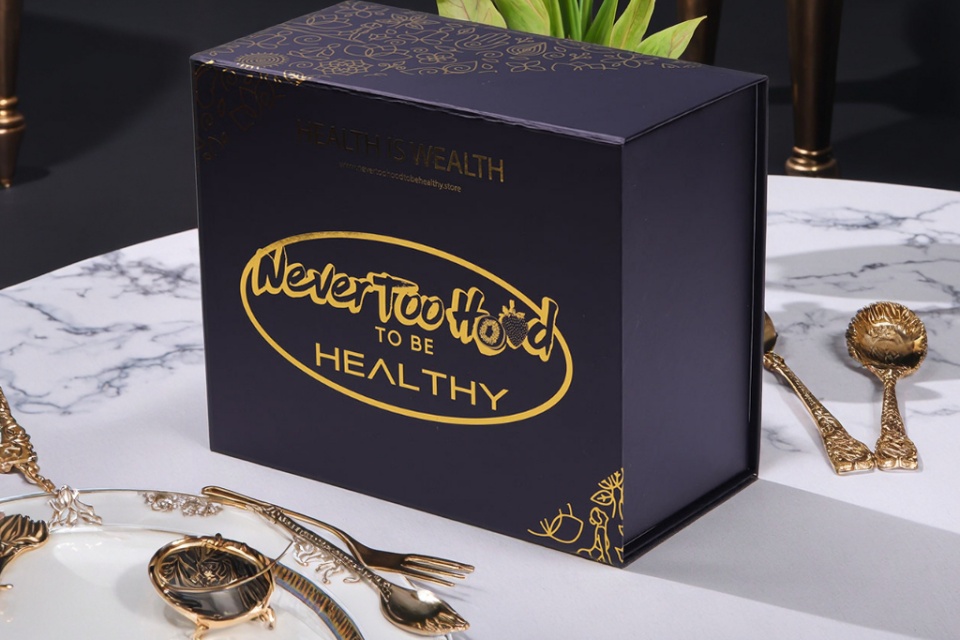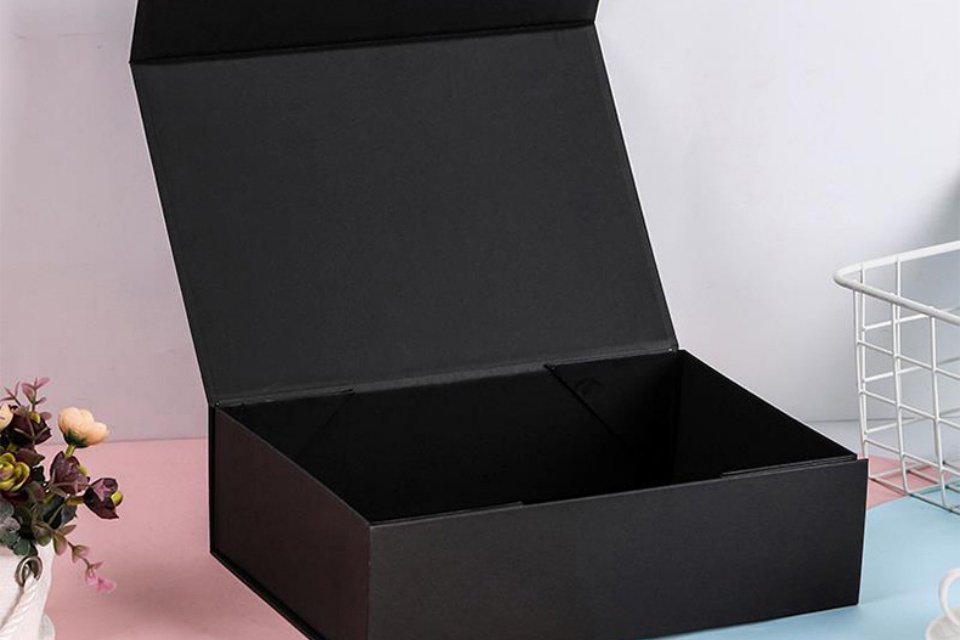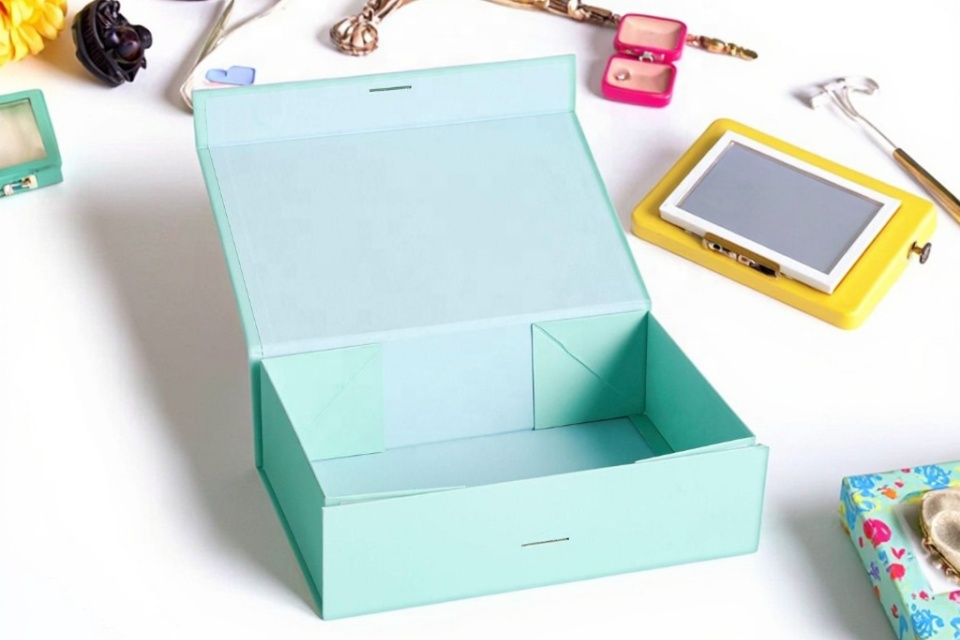Lastest News
Closure Options For Collapsible Boxes
Closure Options For Collapsible Boxes
Summary
Closure options for collapsible boxes represent a critical aspect of packaging design, influencing functionality, user experience, and sustainability. These closures serve a dual purpose: they protect the contents during transport and facilitate ease of access for consumers. Various types of closure mechanisms, including dispensing and non-dispensing options, cater to a wide array of products, from food and beverages to premium items, ensuring that manufacturers can tailor their packaging solutions to meet specific market demands and consumer preferences.
Notably, the evolution of closure options has been driven by advancements in design and technology, as brands increasingly prioritize user-friendly features, aesthetic appeal, and sustainable materials. Innovations such as smart packaging technologies and ergonomic designs enhance consumer interaction and accessibility, reflecting a growing emphasis on meeting the diverse needs of today's shoppers. Additionally, the trend towards sustainability has become a focal point for consumers, with many willing to pay a premium for eco-friendly packaging that aligns with their values.
However, the choice of closure options is not without its controversies. Balancing cost-effectiveness with quality and sustainability presents challenges for brands navigating a competitive marketplace. The ongoing pressure to deliver both functional and visually appealing packaging, while ensuring environmental responsibility, highlights the complexities within the industry. As consumer expectations continue to evolve, businesses must remain agile, adapting their strategies to harness the potential of innovative closure designs while addressing concerns regarding sustainability and usability.
Types of Closure Options
There are various closure options available for collapsible boxes, each designed to meet specific functional and usability requirements. The two most common types of packaging closures are dispensing closures and non-dispensing closures. Below are some popular types of closure options that can be utilized in collapsible box designs.
Dispensing Closures
Dispensing closures are tailored for products that require controlled dispensing.
Spout Closures
Spout closures allow for convenient pouring of liquids, powders, or semi-liquid products. They are often used in packaging for beverages and cleaning products, enabling users to dispense the product in a controlled manner.
Slider Closures
Slider closures feature a track and tab mechanism that provides a tactile experience for users. Commonly seen in premium packaging, they enhance the user experience while offering easy access to the contents of the box, making them an excellent choice for high-end products.
Peel-and-Reseal Closures
Peel-and-reseal closures offer a user-friendly option that allows consumers to easily open and reseal packaging, ensuring product freshness and convenience.
Non-Dispensing Closures
Non-dispensing closures focus primarily on sealing and protecting the product rather than dispensing it.
Snap-Lock Closures
Snap-lock closures are designed with tabs on the top and bottom that interlock, creating a secure seal with a simple push. These closures are widely used in food applications and can be customized for various sizes and shapes, providing reliable product protection during transportation and storage.
Tuck-End Closures
Folding boxes with tuck-in flaps utilize tuck-end closures, which allow for easy assembly and secure sealing. These closures are commonly used for lightweight products that do not require additional protection during handling.
Pinch Seals
Also known as pinch seals, these closures create a tight seal through a simple press, making them ideal for food and medical applications where product integrity is essential.
Design Considerations
Functional Requirements
When designing collapsible boxes, it is essential to address the functional requirements dictated by the product being packaged. The type, size, and weight of the product significantly influence the packaging design. For example, heavier products necessitate sturdy materials, such as corrugated cardboard, to withstand the weight without compromising durability. Conversely, delicate items may require additional protective measures like foam inserts or custom-molded padding to ensure safety during transit. Ensuring that the packaging is both functional and protective is vital for maintaining customer satisfaction and reducing return costs.
User Experience and Convenience
Creating an optimal user experience is crucial for the success of collapsible boxes. Packaging designs that prioritize ease of use—such as those featuring easy-opening mechanisms—are more likely to enhance customer satisfaction. For instance, foldable designs that emphasize easy assembly and reusability can significantly improve user interactions. Brands can also incorporate innovative closure options, such as magnetic seals, which not only facilitate effortless opening and closing but also add a premium feel to the packaging. Such attention to user-friendly features helps build customer loyalty and can distinguish a brand in a competitive market.
Aesthetic Appeal
While functionality is paramount, aesthetic appeal should not be overlooked. The visual design of collapsible boxes plays a significant role in attracting consumers and reinforcing brand identity. Striking a balance between functionality and visual appeal is essential; a beautiful package that fails to protect the product will ultimately disappoint consumers. Moreover, incorporating emotional triggers in packaging design, such as relatable customer stories or appealing imagery, can create a stronger connection with the audience and enhance the overall branding experience.
Sustainability Considerations
With increasing consumer demand for sustainable practices, the design of collapsible boxes must also consider environmental impacts. Utilizing sustainable materials, such as FSC-certified paperboards and biodegradable options, can not only meet consumer expectations but also improve a brand's image. Innovations in packaging materials that provide both durability and sustainability can help brands stand out while addressing growing environmental concerns. As consumers become more eco-conscious, brands that prioritize sustainable packaging solutions are likely to attract a loyal customer base.
Cost-Effectiveness
Finally, the economic aspect of packaging design cannot be ignored. While the initial cost of collapsible boxes may seem higher than traditional options, evaluating the long-term value proposition—such as durability and reusability—can illustrate significant cost savings over time. Brands must assess their packaging strategies to ensure they balance quality and cost-effectiveness, which is especially crucial in the competitive retail landscape. This approach not only enhances profit margins but also allows for sustained investment in innovative packaging solutions.
Applications of Closure Options
Closure options for collapsible boxes play a significant role in both functionality and aesthetics, impacting how products are presented and protected. These closures are designed to enhance user experience, maintain product integrity during transit, and align with brand identity.
Functionality and Protection
The primary application of closure options in collapsible boxes is to ensure that products remain secure and undamaged during shipping and handling. Robust materials and smart design elements, such as reinforced closures, prevent items from breaking or being squashed, which is particularly crucial in online retail environments. Furthermore, closures can be optimized for ease of use, allowing customers to open and reseal packages conveniently, which enhances overall user satisfaction.
Aesthetic Appeal
In addition to practical functions, closures are critical for the visual appeal of packaging. Attractive and well-designed closures can entice customers, making products stand out on shelves or in online listings. Packaging design that tells a story through its closure features can effectively communicate brand values and create emotional connections with consumers, thereby increasing brand loyalty.
Sustainability Considerations
Sustainability is another important aspect of closure options for collapsible boxes. Innovative designs that incorporate eco-friendly materials and reduce waste through features like flat-pack designs can appeal to environmentally conscious consumers. These options allow brands to maintain a high-end image while demonstrating their commitment to sustainability. For instance, collapsible rigid boxes reduce shipping volume, leading to lower carbon emissions and supporting more sustainable logistics practices.
Technological Integration
Advancements in technology have also introduced smart packaging solutions that utilize closures integrated with sensors and tracking capabilities. This innovation allows for real-time monitoring of product conditions, such as expiration dates and storage environments, which can be particularly beneficial in sectors like healthcare and food service. The incorporation of such technologies into closure designs not only enhances functionality but also adds a layer of sophistication to the packaging.
Innovations in Closure Options
Innovations in closure options for collapsible boxes are pivotal in enhancing both functionality and user experience in packaging. These advancements not only ensure the security of contents during transport but also cater to the growing demand for smart and sustainable packaging solutions.
Smart Packaging Technologies
Smart packaging technologies are transforming traditional closure mechanisms by integrating digital features that improve interaction between the product and the consumer. This includes the use of RFID (Radio Frequency Identification) tags, NFC (Near Field Communication) chips, and QR codes, which provide consumers with real-time access to information regarding product provenance, usage instructions, and multimedia content simply by scanning with a smartphone. Such innovations not only enhance user engagement but also promote transparency and informed consumer choices.
Ergonomic and User-Friendly Designs
Recent trends in closure systems emphasize ergonomics and user-friendliness. Designers are focusing on creating closures that are easily operable for all consumers, including those with disabilities. Factors such as ease of use, accessibility, and intuitive designs are increasingly prioritized in the development of closure systems for collapsible boxes. For example, closures that feature tactile elements or simplified mechanisms can significantly improve user experience, particularly for elderly or disabled individuals.
Sustainable Materials
Sustainability is another crucial aspect of innovation in closure options. Manufacturers are now exploring materials that are both durable and environmentally friendly, such as bioplastics and recycled materials. This shift aims to reduce the environmental impact of packaging while maintaining the performance standards necessary for protecting products. Moreover, the use of sustainable materials aligns with growing consumer expectations for eco-conscious practices among brands.
Integrated Tracking Features
The incorporation of integrated tracking features is becoming a significant trend in the design of collapsible boxes. Innovations such as smart sensors and IoT-enabled technologies allow for real-time monitoring of container conditions, improving logistics and supply chain management. For instance, systems like COLLAPSECON utilize tracking devices to optimize fleet management, ensuring that businesses can efficiently monitor container status and location throughout the shipping process.
Trends and Consumer Preferences
Evolving Consumer Expectations
Consumer preferences are increasingly shaping packaging trends, particularly in the realm of closure options for collapsible boxes. Modern shoppers are more discerning, seeking not only functionality but also aesthetics and sustainability in packaging design. A significant 72% of consumers indicate that packaging design influences their purchasing decisions, underscoring the importance of eye-catching and innovative designs. This shift necessitates that brands continually evaluate and adapt their packaging strategies to align with consumer expectations.
The Impact of Sustainability
Sustainability is a pivotal factor in consumer decision-making. Many customers are willing to pay a premium for eco-friendly packaging options, recognizing the long-term benefits of sustainability. Companies that prioritize sustainable materials and practices not only enhance their brand image but also build customer loyalty. The demand for sustainable closure options is rising, as consumers increasingly seek products that reflect their values and commitment to the environment.
The Role of Design and Usability
Effective packaging design is critical to attracting consumers and fostering brand loyalty. Notably, appealing designs that incorporate user-friendly features can significantly impact purchasing behavior. The integration of ergonomics and accessibility into closure systems is essential, especially for consumers with disabilities. A well-designed closure system enhances the overall user experience and can lead to greater customer satisfaction and repeat purchases.
The Unboxing Experience
The unboxing experience has become a focal point in consumer interactions with products. Unique and engaging packaging encourages consumers to share their experiences on social media, with 40% more likely to share images of products that come in distinctive packaging. Brands can leverage this trend by investing in innovative closure options that not only secure the product but also contribute to a memorable unboxing experience.
Continuous Feedback and Adaptation
To stay ahead in the competitive market, companies must continuously gather and evaluate consumer feedback regarding their packaging choices. Surveys, social media polls, and direct interviews provide valuable insights into consumer preferences, helping brands refine their packaging strategies to better meet expectations. By staying attuned to consumer preferences, brands can develop packaging solutions that resonate with their target audiences and drive long-term success.
Categories
Latest News
Contact Us
Contact: Aaron Lee
Phone: +8613570866244
Tel: +8675529490260
Add: Li Songlang 2nd Industrial Zone,No.18,FengTang Rd,Guangming New District


